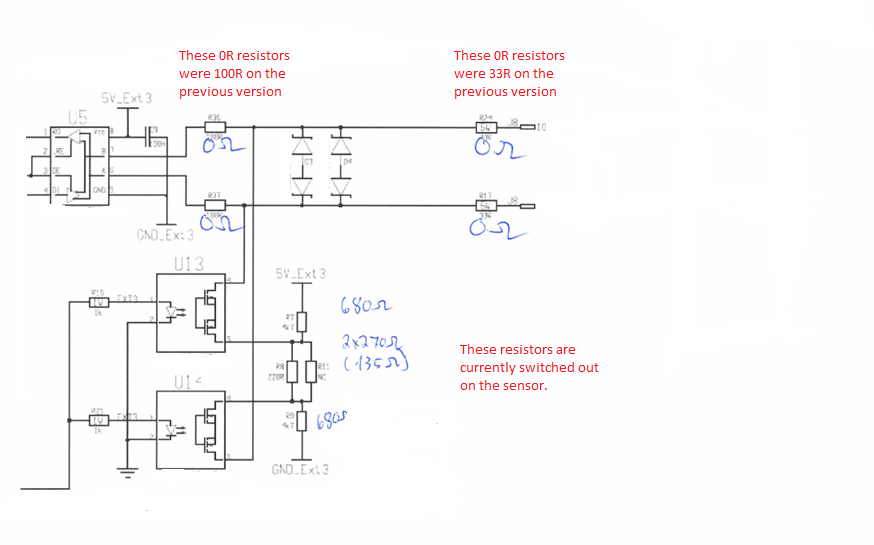Hi, we are interfacing to a third party sensor and are having intermittent problems with communications.
The sensor is using THVD1520 as the RS485 transceiver, we are using a Maxim device on our end. This sensor previously worked but the manufacturer has updated it's revision and approximately 50% of the sensors we try have the same communication problem. It appears to be a marginal problem.
We are trying to figure out what could be happening, unfortunately we have one of their sensors but aren’t able to open it to probe the circuit.
I’ve attached a screenshot that some of our guys have recorded. It looks like for a run of zeros the transceiver briefly reverts to the idle state. We are thinking that either the transceiver isn’t able to drive for the full length of the data or possibly the data enable line is fluctuating?
We are able to to identify our transmission and the response from the sensor; this is definitely the sensor response.
From the brief part of the circuit that we've seen /RE and DE are tied together in the sensor.
This appears to be a marginal condition, some sensors, of the same type, work and others don’t.
Is this something that has been seen before? Can you give us any suggestions on what could be happening?
Thanks & regards,
Amanda


